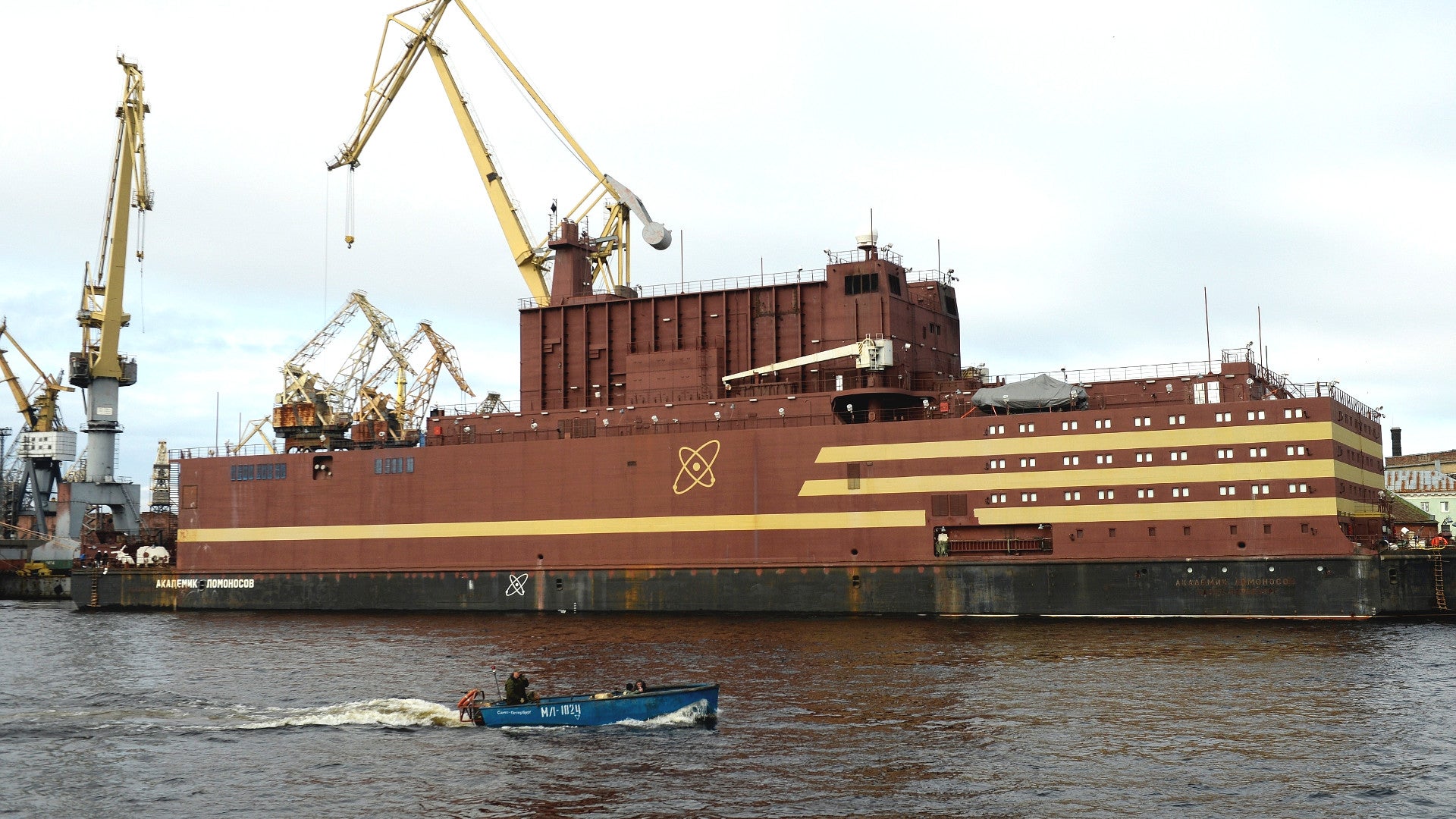Russia has begun towing the first of its new floating nuclear power plants, the Akademik Lomonosov, to Murmansk, where it will receive the nuclear fuel for its two reactors. The only one of its kind in service today, the program’s progress is yet another example of the Kremlin’s active push to expand its presence in the increasingly strategic Arctic region, but the concept could find use in various roles elsewhere, as well.
The Lomonosov left the Baltic Shipyard in Saint Petersburg on April 28, 2018. The Sevmash shipyard in Severodvinsk on the White Sea in northern Russia had first laid down the barge in 2007, before transferring it to the Baltic Shipyard the following year. The vessel will first test its reactors by the end of 2018 and it will enter formal service in Pevek in Russia’s Far East region in 2019, according to a press release from the shipyard. The Russian government plans to buy at least seven of these power barges in total.
When it becomes operational, the nearly 500-foot long Lomonosov will have a displacement of around 21,500 tons. Inside the warehouse-like superstructure is more or less a typical nuclear power plant, with a reactor complex, control facilities, and the necessary equipment to generate electricity and safely transfer it ashore. There’s a helipad on top to help ferry technicians to and from their jobs onboard.
Each Lomonosov-class vessel will have two KLT-40S pressurized water reactors, a derivative of the standard KLT-40 and improved KLT-40M, the latter of which powers Russia’s Taymyr-class icebreakers. Each S variant can produce up to 35 megawatts of electricity or 150 megawatts of thermal energy.
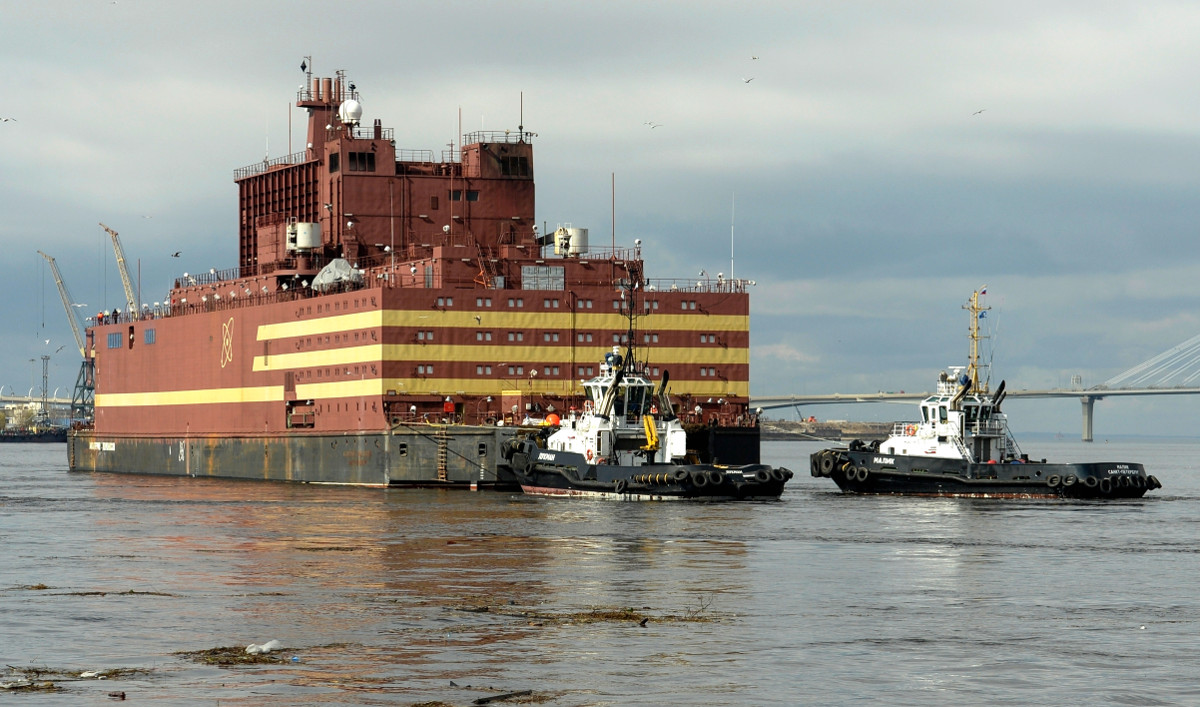
According to the press release from the Baltic Shipyard marking the departure from Saint Petersburg, the thousands of miles long voyage to Murmansk will be relatively slow going. At the very best, the four tugs belonging to Russia’s Federal Agency for Maritime and River Transport, or Rosmorrechflot, will be able to move the power plant at around four knots, or just over four and a half miles an hour.
But the lumbering Lomonosov is significant in a number of ways. Most importantly, it represents the first of a class of floating nuclear power plants, which is also known as the Project 20870, that engineers designed from the very beginning to be mass produced. The first nuclear power ship, the Army’s MH-1A Sturgis, which provided power in the Panama Canal Zone between 1968 and 1975, was a conversion of an existing World War II-era Liberty ship.
As such, Russia has suggested that if this type proves successful that it could export it to other nations with significant populations situated along coastal areas. As of 2008, the Russian state nuclear energy corporation Rosatom claimed that China, Indonesia, Malaysia, Algeria, Namibia, Cape Verde, and Argentina had all expressed an interested in the Project 20870 vessel or similar designs.
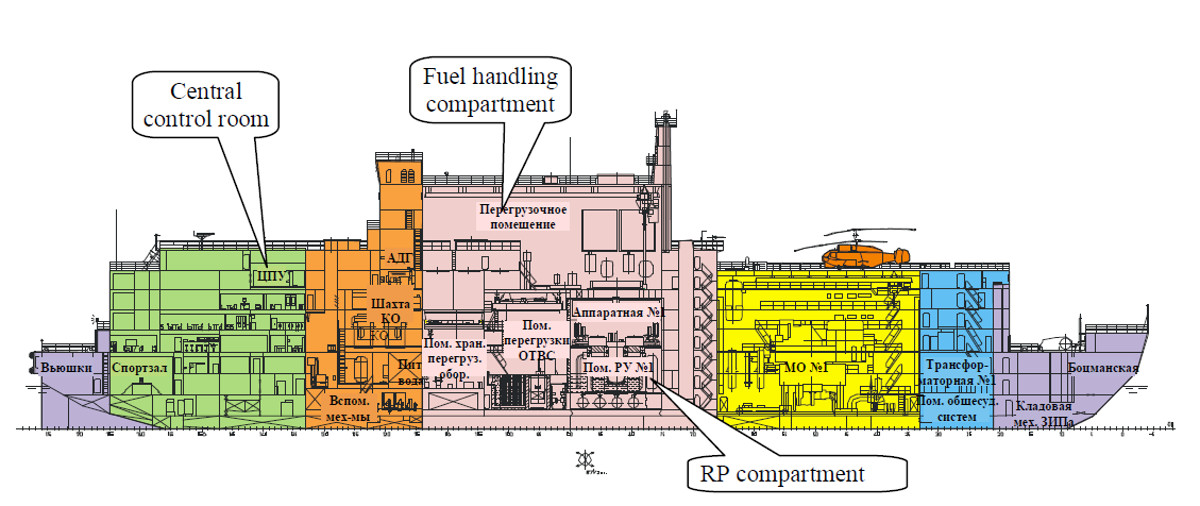
For the Russian government specifically, the ships will significantly allow it to significantly expand its activities in the Far North and Arctic regions, which can often be isolated from communities further south for months at a time. As a result, it can be difficult to support fossil-fuel powered power stations in these areas, as it requires the prepositioning of large quantities of coal, oil, or natural gas.
At the same time, shifting permafrost and other terrain features, as well the generally harsh climates, can often make it difficult to quickly and safely erect complex structures, such as nuclear power plants, to support even civilian communities near or above the Arctic Circle. A mobile, floating power station helps get around these issues.
In Pevek, Lomonosov will be able to quickly replace the Soviet-era Bilibino Nuclear Power Plant and the Chaunskaya coal-fired power plant. Of the other six planned Project 20870 floating power stations, five are already set to help Russia’s state-run oil and gas company Gazprom expand its off-shore activities in and around the Arctic region. The last one could go to Dudinka on the Taymyr Peninsula or Vilyuchinsk on the Kamchatka Peninsula, both also in the country’s far north.
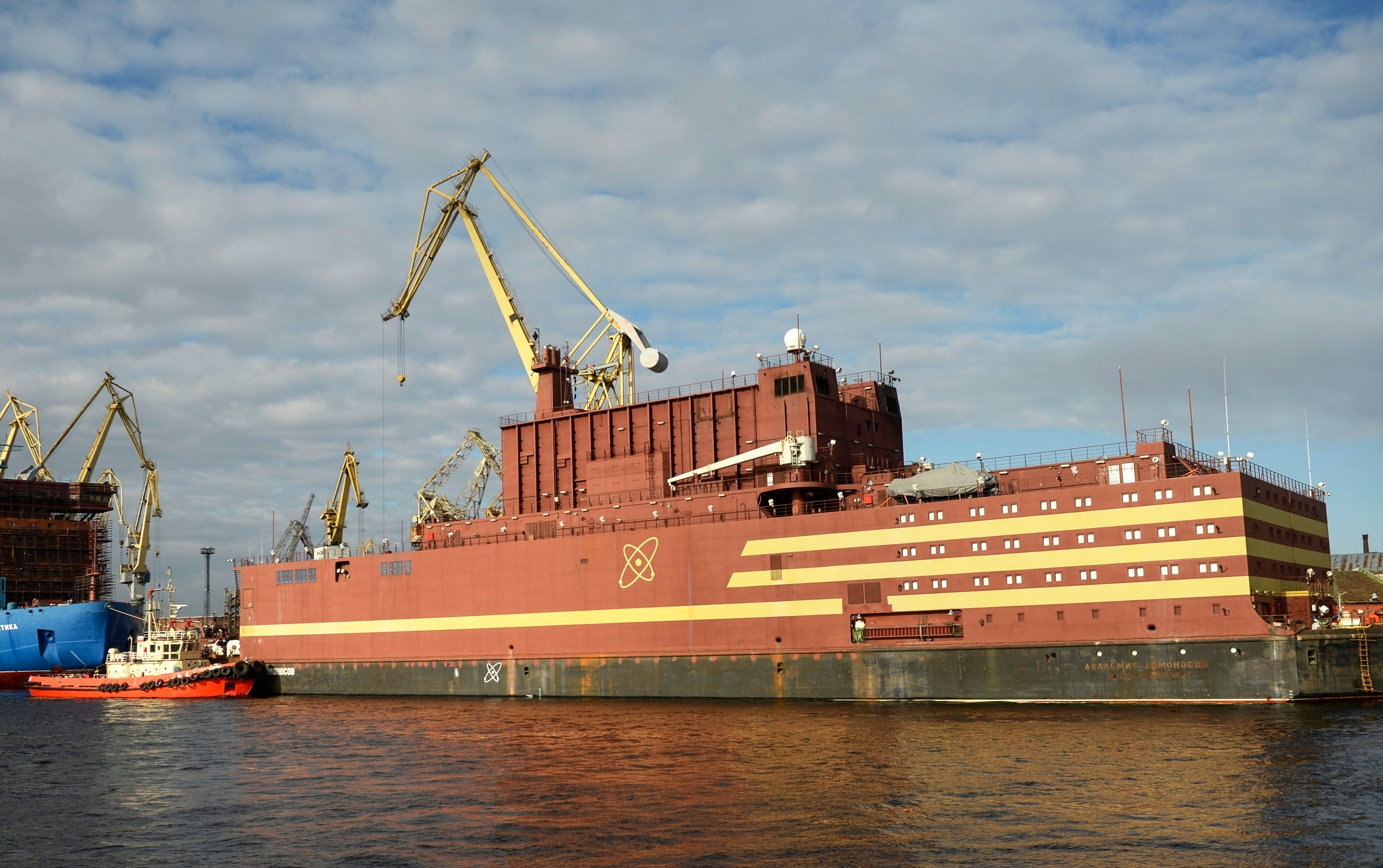
If the concept proves sound, though, it seems likely that the Kremlin could look to expand the number of floating nuclear power plants, either of Project 20870 type or separate designs, to support additional efforts in the Arctic region, including supporting new or rehabbed military facilities. Starting in 2014, Russian President Vladimir Putin announced plans to refurbish various abandoned sites in the area, as well as build entirely new air, ground, and naval bases. This decision was part of a generally more assertive Russian force policy that had already become apparent with the illegal annexation of Ukraine’s Crimea region earlier that year.
In April 2017, Russian officials unveiled one of the first of its all-new Arctic sites, called the Arctkicheski Trilistnik, which translates variously as Arctic Trefoil or Arctic Shamrock, which sits on Alexandra Land, an island in the Franz Josef archipelago, and is north of the Arctic Circle. It is unclear whether this base’s own power plant, which helps it remain self-sufficient during the winter months when it is largely cut off from the mainland, is conventional or nuclear.
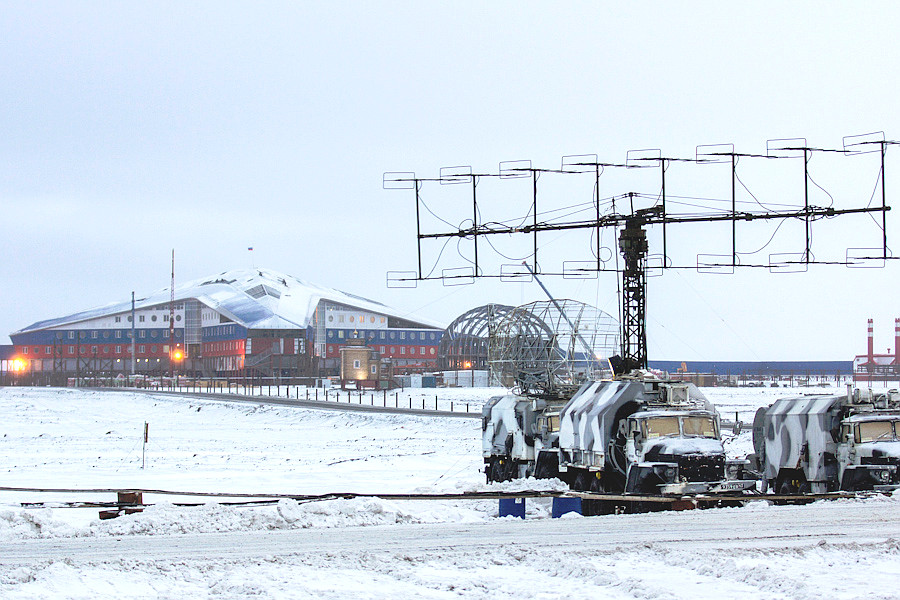
On top of that, the Kremlin has reportedly already been expanding its military use of nuclear power, including developing smaller underwater nuclear power stations as part of expanding undersea sensors networks in the Arctic region. This makes sense if Russian officials are looking to better monitor foreign submarine movements and otherwise secure territorial claims in the area.
Floating nuclear power plants such as Lomonosov could similarly help provide the critical power for permanent, semi-permanent, or temporary stations in remote areas, on ice floes, or even on the water’s surface over protracted periods of time. Typical portable generators using fossil fuels might be enough to sustain basic life support in these locations, but could require a significant and regular logistical pipeline and wouldn’t necessarily be able to run power-hungry sensor or weapon systems. With more robust bases with these types of assets, the Russians would be better positioned to actually limit foreign military activities, especially in a crisis, rather than just monitor them.
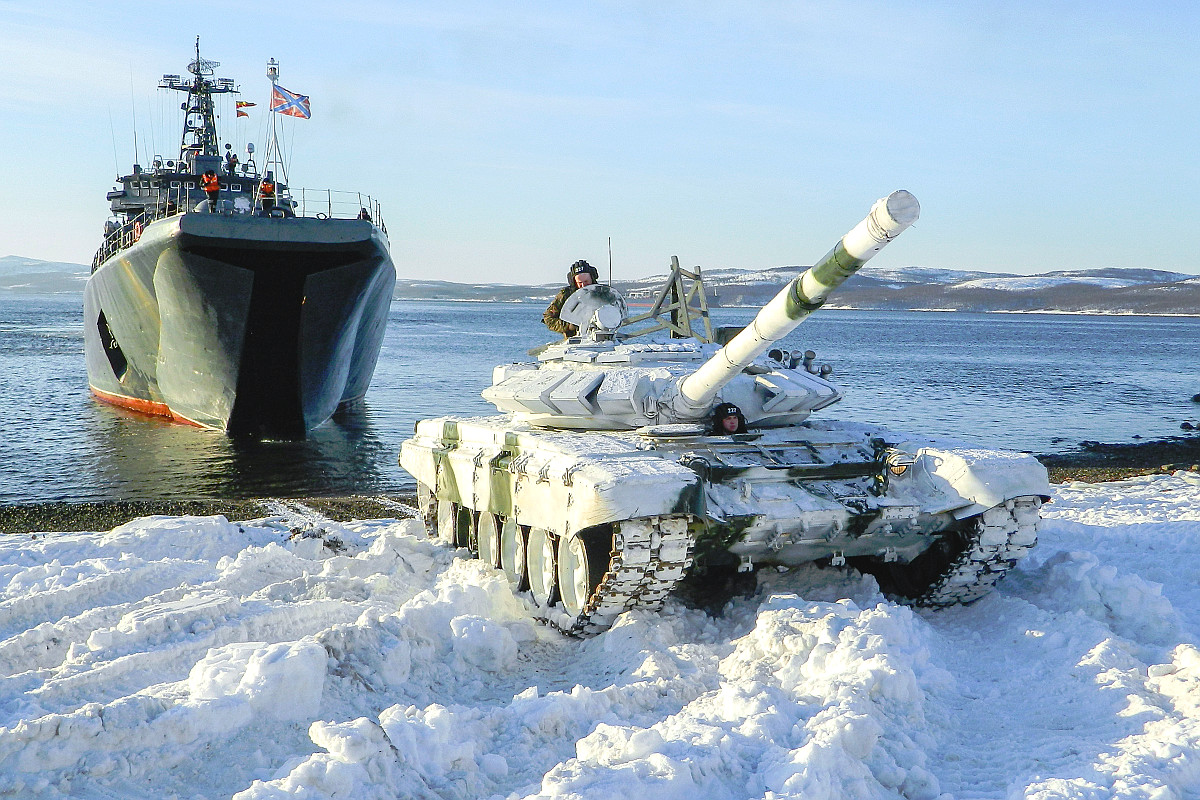
That’s not to say there aren’t potential limits to or concerns about the fleet of nuclear power barges. As noted, these floating platforms are not particularly easy to move and once in place, they may essentially take on the role of a fixed power plant. With tugs only able to move them at a top speed of four knots, it could take an immense amount of time and effort to bring them back to Murmansk or Saint Petersburg for any necessary heavy maintenance, as well.
The plan for the Lomonosov with its 70-megawatt output to fully replace the Bilibino Nuclear Power Plant, with its top generating capacity of 48-megawatts, as well as the Chaunskaya generating plant might be optimistic, as well. It would no doubt require the ship to run regularly and without incident in order to provide that steady stream of power to the communities in and around Pevek.
And while Russian authorities insist that the KLT-40S reactor design is both proven and reliable, it is based on a decade’s old design. In 2011, the icebreaker Taymyr suffered a coolant leak on one of its KLT-40Ms that resulted in a release of radiation into the atmosphere in spite of various redundancies and other safety features found on that already updated design.
Combining it with a floating platform in a region where weather can quickly turn extreme has long prompted concerns about the potential for a major radiological incident and environment disaster, as well. Russia claims that the Lomonosov is sufficiently hardened against a variety of natural disasters and accidents, reportedly being strong enough to even brush off a small plane crashing into it.
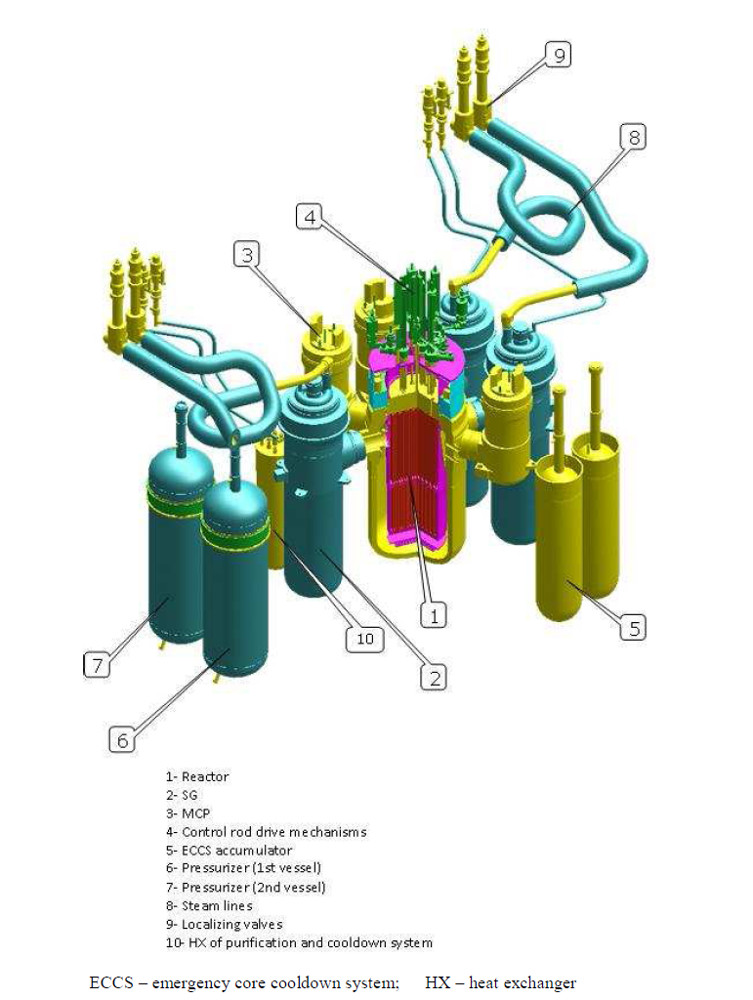
And regardless of whether the base KLT-40 design is safe in principle, there are questions about whether or not Russia’s nuclear industry is capable of the necessary quality control and routine maintenance to keep it that way or will have adequate funding to do so. Just in the past 18 months, there have been reports of unexplained increases in radioactive isotopes in the atmosphere originating from Russia, with experts saying the most likely culprits are poorly maintained nuclear power plants and waste facilities.
Still, the Project 20870 program, along with Russia’s other military and civil investments in the Arctic region, show that the country is serious about expanding its presence there. Doing so can only help the country gain improved access to various natural resources and trade routes, as well as deny the same, as well as freedom of military movement in a crisis, to its potential opponents.
The Kremlin isn’t alone in identifying the growing importance of the region, either. China, among others, is now reportedly increasing its own activities and investments in the Arctic, presenting another challenge to the United States its regional partners, such as Canada, Japan, and South Korea. The Chinese government expects to commission its first domestically produced ice-capable research ship, the Xuelong 2 or Snow Dragon 2, in 2019.

“U.S. presence in the Arctic is necessary for more than just power projection; it’s a matter of national security,” U.S. Coast Guard Commandant Admiral Paul Zukunft, who’s service controls the U.S. government’s only two remaining icebreakers, told legislators during a hearing in May 2017. “If they remain unchecked, the Russians will extend their sphere of influence to over five million square miles of Arctic ice and water.”
If the Project 20870 program proves workable to any serious degree, it might kickstart a renaissance of sorts for power ships and float nuclear power plants, which could have broad applications in coastal areas. As already noted, Rosatom has indicated that the Lomonosov could be an attractive design for any country that is looking to rapidly expand reliable power in coastal regions. Depending on how robust the power grid might be, it might even be possible to use the floating power station to provide electricity much further inland, as well.
This sort of capability could easily have a wide variety of applications in any remote littoral area, such as the Pacific Ocean, it might be otherwise difficult to rapidly establish the necessary prime power during sustained, but distributed military operations or in the aftermath of a natural disaster. For military forces especially, being able to deploy a high-capability, but relatively mobile power plant might just be increasingly necessary given the growing electricity demands of advanced sensor systems and other equipment, and even potentially certain future weapon systems such as land-based railguns.
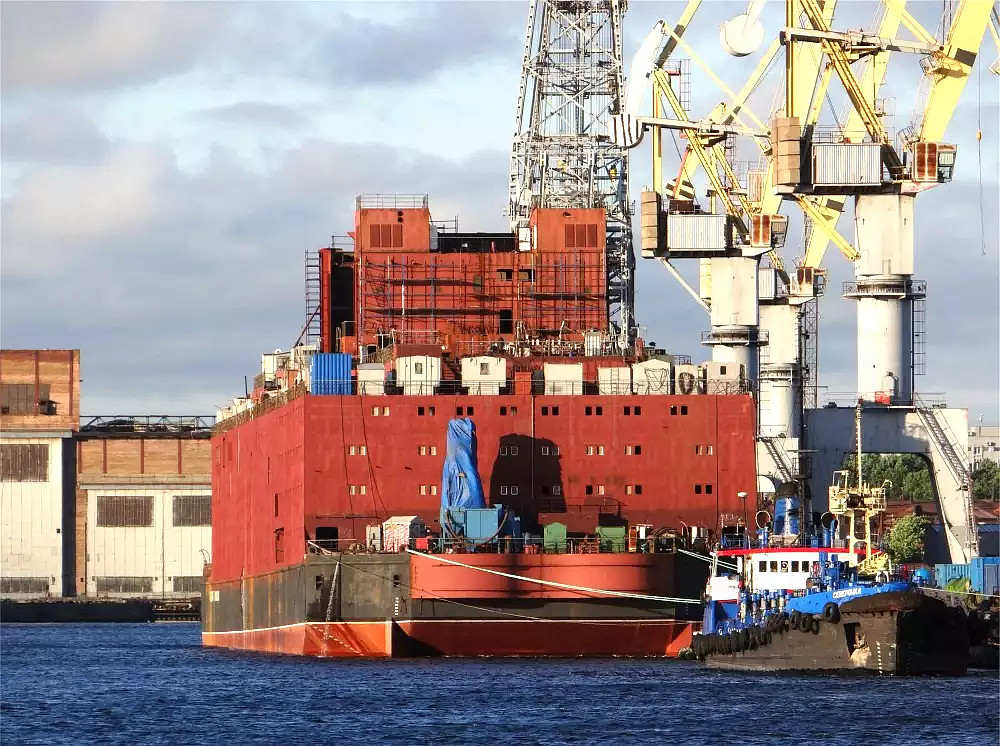
In addition, concepts such as the Lomonosov could serve as a stepping stone to the development of even smaller, more portable nuclear reactors to support military operations. These units would also be even better suited to rapid deployment as part of a humanitarian relief mission.
“Maybe one of the most tragic events in recent history with the hurricane that hit Puerto Rico. 3.5 million Americans who are without electricity. We’re trying to get micro generators down there. We’re trying to get fuel down there,” U.S. Secretary of Energy Rick Perry said during a panel discussion in September 2017. “Wouldn’t it make abundant good sense if we had small modular reactors that literally you could put in the back of a C-17 aircraft, transport to an area like Puerto Rico push it out the back end, crank it up, plug it in that could serve tens of thousands if not hundreds of thousands of people very quickly?”
As with the MH-1A floating nuclear power plant, this wouldn’t be the first time the U.S. government has explored this concept. During the 1960s, the Army experimented with an air-transportable nuclear reactor called the ML-1, which was small enough that its two main parts could each fit on the back of a tractor-trailer truck or a rail car. The U.S. Air Force also employed small nuclear reactors during the Cold War to power remote radar stations and a similar, containerized design supported U.S. government research work for a time at McMurdo Station in Antarctica.

In the aftermath of Hurricane Iwa in 1982 in Hawaii, the U.S. Navy investigated whether it might be possible to power storm-damaged areas by linking a nuclear submarine to the local power grid. It’s an idea that reappeared on internet forums and comments sections after Hurricane Maria slammed into Puerto Rico.
Unfortunately, these ideas have so far not proven to be practical options. ML-1 was exceptionally expensive and proved unsuitable for use on a wide scale. It hasn’t appeared to be any more cost-effective to use nuclear warships as temporary power stations.
Experts are also skeptical about whether miniature reactors such as ML-1 could be any cheaper to produce now and suggest that any practical mobile designs that a company could mass produce would still be closer in size to the one on Lomonosov or other ships. The safety and security requirements of deploying numerous small reactors could easily add to the overall costs and make the concept of dubious value in the end.
It remains to be seen how rapidly the Russians can build the remaining six planned Project 20870 power plants and how capable they actually are in practice, for operations in the Arctic or anywhere else. If nothing else, Lomonosov’s trip to Murmansk makes it clear that the Russians are moving ahead to expanding that influence in the Arctic to the full extent that they can, especially as additional competitors, such as China, are making their own inroads in the region.
Contact the author: jtrevithickpr@gmail.com
